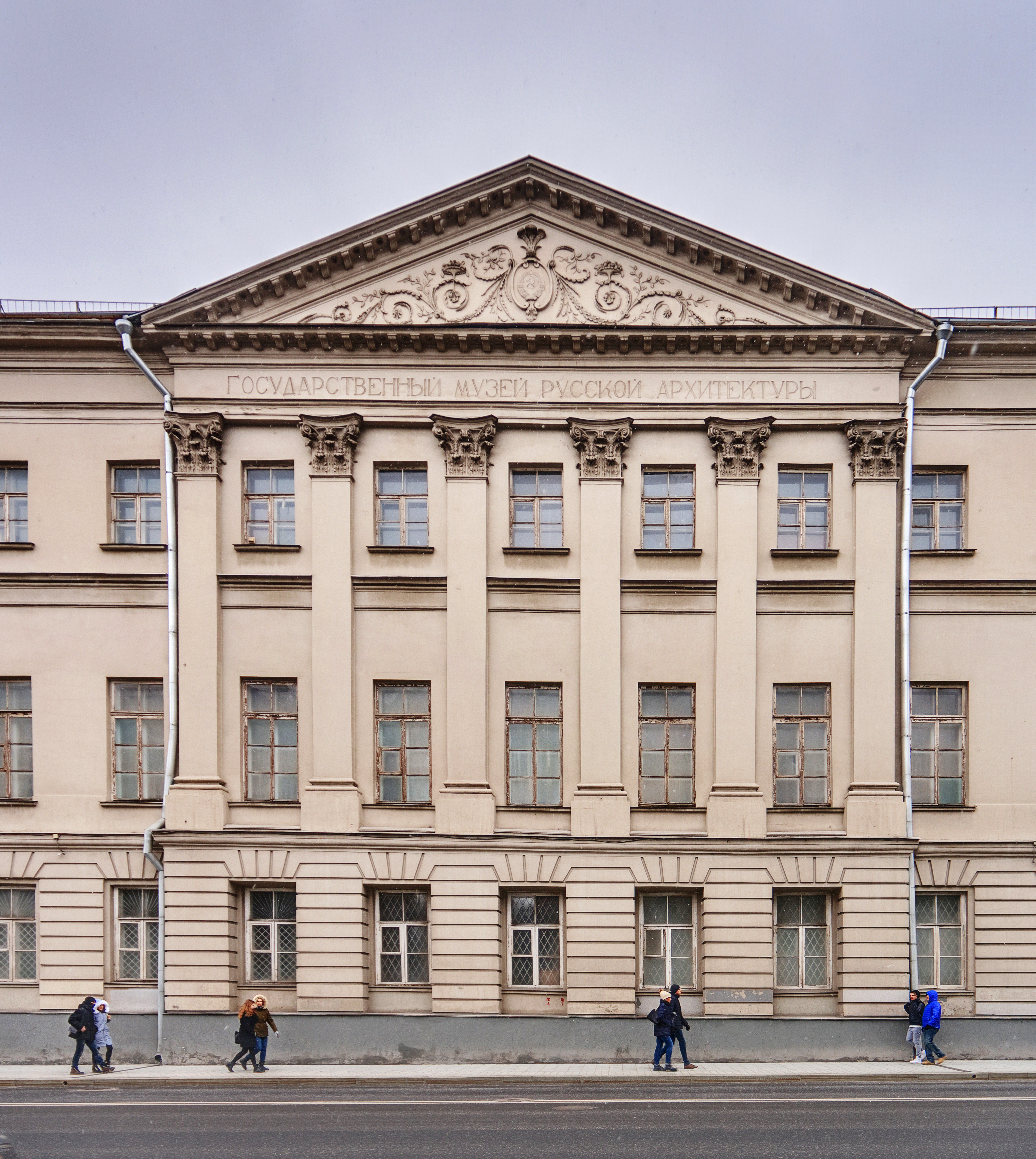Shchusev Museum Of Architecture on:
[Wikipedia]
[Google]
[Amazon]
 The ShchusevThe official site of the museum prefers the spelling ''Schusev''. Museum of Architecture is a national museum of
The ShchusevThe official site of the museum prefers the spelling ''Schusev''. Museum of Architecture is a national museum of
, retrieved 11 November 2011 The collections include more than 800000 items. The museum is named after Russian and Soviet architect
Shchusev State Museum of Architecture
{{authority control Museums in Moscow National museums Architecture museums Architecture in Russia Art museums established in 1934 1934 establishments in Russia
 The ShchusevThe official site of the museum prefers the spelling ''Schusev''. Museum of Architecture is a national museum of
The ShchusevThe official site of the museum prefers the spelling ''Schusev''. Museum of Architecture is a national museum of Russian Architecture
The architecture of Russia refers to the architecture of modern Russia as well as the architecture of both the original Kievan Rus’ state, the Russian principalities, and Imperial Russia. Due to the geographical size of modern and imperia ...
located in Moscow
Moscow ( , US chiefly ; rus, links=no, Москва, r=Moskva, p=mɐskˈva, a=Москва.ogg) is the capital and largest city of Russia. The city stands on the Moskva River in Central Russia, with a population estimated at 13.0 millio ...
the capital of Russia
Russia (, , ), or the Russian Federation, is a transcontinental country spanning Eastern Europe and Northern Asia. It is the largest country in the world, with its internationally recognised territory covering , and encompassing one-eig ...
and also a research centre to study and promote the architectural and urban heritage. The museum was founded in 1934 and is located on the Vozdvizhenka Street.Shchusev State Museum of Architecture: About the Museum, retrieved 11 November 2011 The collections include more than 800000 items. The museum is named after Russian and Soviet architect
Alexey Shchusev
Alexey Victorovich Shchusev (academic spelling), german: Schtschussew, french: Chtchoussev, pl, Szchusiew. (russian: Алексе́й Ви́кторович Щу́сев; – 24 May 1949) was a Russian and Soviet architect who was successf ...
.
History
The original museum of the Academy of Architecture, established in 1934 was located in the secularizedDonskoy Monastery
Donskoy Monastery (russian: Донско́й монасты́рь) is a major monastery in Moscow, founded in 1591 in commemoration of Moscow's deliverance from the threat of an invasion by the Crimean Khan Kazy-Girey. Commanding a highway to ...
. The sprawling fortified monastery housed hundreds of fragments of art salvaged from the demolished buildings. The museum was dedicated, at least officially, to worldwide architecture of all periods and styles, although most tangible exhibits were Russian.
In the summer of 1945 Alexey Shchusev
Alexey Victorovich Shchusev (academic spelling), german: Schtschussew, french: Chtchoussev, pl, Szchusiew. (russian: Алексе́й Ви́кторович Щу́сев; – 24 May 1949) was a Russian and Soviet architect who was successf ...
began campaigning for the establishment of a museum of Russian national architecture. The new museum was established in 1946, with Shchusev as its first director. He personally picked the , then occupied by the NKVD
The People's Commissariat for Internal Affairs (russian: Наро́дный комиссариа́т вну́тренних дел, Naródnyy komissariát vnútrennikh del, ), abbreviated NKVD ( ), was the interior ministry of the Soviet Union.
...
, and used his connections within the organization to free it up for the museum. Under Shchusev's management the museum became a refuge for the unemployed Jews hit by the anti-cosmopolitan campaign
The anti-cosmopolitan campaign (russian: Борьба с космополитизмом, ) was a thinly disguised antisemitic campaign in the Soviet Union which began in late 1948. Jews were characterized as rootless cosmopolitans and were targe ...
, like , and . The Baldin Collection of German art was secretly deposited in the museum, with Shchusev's consent, in 1948. However, the main purpose of the museum, as envisaged by Shchusev himself, was the recording and archiving of Russian heritage that was destroyed or damaged during the war. For the first ten years, it operated primarily as a research and archive institution; the first permanent public exhibition opened in 1957.
In 1964, after Nikita Khrushchev
Nikita Sergeyevich Khrushchev (– 11 September 1971) was the First Secretary of the Communist Party of the Soviet Union from 1953 to 1964 and chairman of the country's Council of Ministers from 1958 to 1964. During his rule, Khrushchev s ...
had disbanded the Academy of Architecture, the two museums were merged into the Shchusev Museum of Architecture. The Donskoy Monastery and the Talyzin House exhibited pre-revolutionary Russian and post-revolutionary Soviet exhibits, respectively. In 1991 the government expelled the museum from the monastery. Some exhibits were evacuated to the Talyzin House, others remained within the monastery walls. The Talyzin House, meanwhile, was falling apart after decades of poor maintenance and vibration from subway trains, and had to be closed for a lengthy restoration.
In the 21st century, the museum operates three main exhibition sites in Vozdvizhenka Street: the reconstructed Talyzin House, the nearby "Ruin" building, and the 17th century building of the former . The Melnikov House
Konstantin Stepanovich Melnikov (Russian: Константин Степанович Мельников; – November 28, 1974) was a Russian architect and painter. His architectural work, compressed into a single decade (1923–33), placed ...
became part of the museum in 2018.
Sources
*References
External links
Shchusev State Museum of Architecture
{{authority control Museums in Moscow National museums Architecture museums Architecture in Russia Art museums established in 1934 1934 establishments in Russia